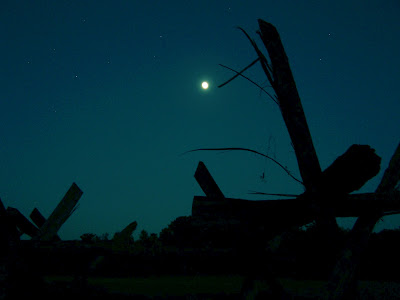The crowd assembled was typical of any in-depth Civil War battlewalk: middle-aged and well-versed history buffs--not that there is anything wrong with that. But where are the kids and young families? Should we be concerned that anniversary programming isn't appealing to younger audiences, especially the next generation of history aficionados?
Maybe not. Perhaps I was only in the right place at the wrong time. Throughout the weekend before the battle anniversary, Manassas National Battlefield hosted a number of Living History demonstrations. I was very pleased to find the above photo in the Saturday edition of the Washington Post with an accompanying article. The photo says it all and the expressions in response to a cannon firing demonstration are priceless. This is how kids get hooked to history. Numerous residents from the greater metro area were in attendance at the Brawner Farm demonstrations. From some responses I have received, the days of events were low-key but pleasant.
As you might guess, the same could not be said of the events there 150 years ago. Near here, General John Gibbon's men pushed through this area with the hope of repulsing southern artillery. There, they collided with "Stonewall" Jackson's brigade and embarked on one of their first and deadliest encounters of the war. Gibbon recalled, "the regiment had become badly involved [and] I ordered the rest of the brigade rapidly up to its support. . . . [F]or over an hour the most terrific musketry fire I have ever listened to rolled along those two lines of battle. . . . A sheet of flame seemed to go out from each side." The Iron Brigade shot away at Virginians less than a football field's distance away. The Mid-westerners lost 725 of their 1,937 men in the process. Painting by Mike Thorson.
Ranger Gregory White of Manassas National Battlefield delivered a clear and effective presentation in describing the horrific and ghastly fighting conditions at the Brawner Farm.
Approximately 130 visitors walked in the footsteps of these soldiers. One combatant of the 7th Wisconsin Infantry here recalled, "We soon found that we had to deal with General Ewell's whole division of picked men. We advanced within hailing distance of each other, then halted and laid down, and my God, what a slaughter! No one appeared to know the object of the fight, and there we stood on hour, the men falling all around; but we got no orders to fall back, and the Wisconsin men would rather die than fall back without orders." And die many of them did.
Not many battlefield tours take place at twilight and nightfall. Doing such added a unique immersive dimension that allowed visitors to have a better grasp of the chaotic and confusing nature of nighttime combat. Private Joseph Kauffman of the 10th Virginia recalled the grim potential of night fighting when he wrote, "It is now sundown. They are fighting on our right, Oh, to God it would stop." They were the last words Kauffman ever wrote.
Robert E. Lee's victorious sweep against Pope's forces outside Manassas compelled him to launch his first invasion into the North--setting the stage for revolutionary changes in the war's operations and meanings. Attending battlewalks and anniversary programs help place these pivotal events within the context of the larger narrative. Above all, it's about people enjoying their parks and gaining a higher appreciation for their history and preservation. Next: the sesquicentennial of the Maryland Campaign. Amidst this, I sense that the notion of freedom and its legacies will be central in the campaign's interpretation. The manners in which we remember this war are continually evolving.









Jared I really enjoy this blog! The posts are great and the photos are amazing. Thanks for sharing this with us!
ReplyDelete